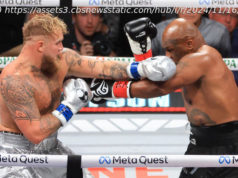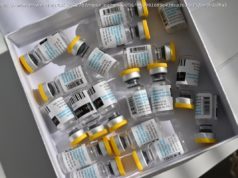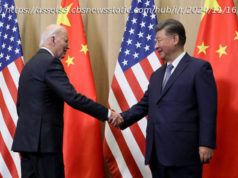The Tesla and SpaceX CEO put the trajectory of Tesla into question after his announcement, and reversal, about taking the car company private.
Elon Musk wanted to get away from the scrutiny of public investors. Instead he made a spectacle of himself.
Over 17 volatile days, bookended by two surprise and unconventional announcements on Twitter, Musk threw the trajectory of his electric car company, Tesla ( TSLA), into question and raised public concerns about his leadership.
Late on Friday, he announced he will not, in fact, take Tesla private, reversing his announcement on August 7 that he was ” considering ” the move and secured funding to do so.
For the past decade, the CEO of Tesla and SpaceX has been lauded as one of the tech industry’s most dynamic innovators. He’s gained loyal followers for his hard-charging leadership style and push to disrupt the rocket, car, and energy industries.
But he’s also repeatedly raised eyebrows with his antics. The past year in particular has been punctuated by erratic behavior. Musk has fired off late-night tweets, brushed off analysts, disparaged a man who helped rescue boys trapped in a cave in Thailand, and sparred with journalists. He vowed to launch a website called Pravda to critique the media.
He recently opened up about his personal turmoil in an emotional interview with the New York Times .
From a business standpoint, the past few weeks have been among the most scrutinized in Tesla’s history.
August 7: In the middle of the trading day, Musk says on Twitter that he is “considering taking Tesla private at $420” per share. “Funding secured,” he wrote.
The company’s stock price shot up immediately. Trading was halted for more than an hour midday before closing 10% higher at $380.
A blog post from Musk explains he wants Tesla to be free of stock market distractions and short sellers (or investors who bet against Tesla), whom Musk has long griped about.
Musk’s move broke with Wall Street convention. Companies typically reserve major announcements for carefully timed press releases.
August 8: The Wall Street Journal reports that regulators at the Securities and Exchange Commission are questioning the company about the factual basis for Musk’s tweets.
Tesla stock dives, erasing some of the gains from the prior day.
August 10: Two lawsuits seeking class action status are filed against Tesla and Musk, accusing him and his company of violations of federal securities law.
The suits claim Musk sought to artificially boost Tesla’s stock price to harm short sellers with the privatization announcement.
Musk cheekily tweets about adding “short shorts” to Tesla’s merchandise.
August 13: Musk reveals in a blog post that he was referring to conversations he had with the Saudi sovereign wealth fund when he said funding was “secured” for the company to go private. He says he has “no question” a deal could be closed, but needed to get “the process moving.”
It leaves broad room for interpretation and suggests to some that a privatization deal wasn’t as developed as Musk initially let on.
Musk also says in a tweet that Goldman Sachs ( GS) and investment firm Silver Lake will provide financial advice .
Analysts continue to raise concerns. Musk’s plan to take Tesla off the stock market could cost around $24 billion, one of the largest such deals ever executed. And Tesla faces obstacles with its cash crunch, large debt load, and production issues.
August 14: Tesla’s board announces that it will study Musk’s proposal, making clear directors have not endorsed the plan.
August 15: The Journal reports the SEC has subpoenaed Tesla regarding Musk’s plans to take the company private, signaling regulators are carrying out a formal probe.
Executives may not make false public statements that impact stock price.
The company’s stock closes at $339.
August 16: The Journal reports that an SEC investigation into Tesla has been going on since last year. Investigators are reportedly looking into whether the company misled investors about the problems facing production of the Model 3.
It’s possible the probe will turn up nothing. But the SEC has the authority to fine Musk or ban him from the C-Suite.
The company’s stock dips slightly, down to $335.
August 17: The stock market reacts to a New York Times interview with the CEO published a day earlier in which he details the heavy personal toll his businesses have taken. He admits to working 120 hours per week and relying on Ambien to sleep.
Investors are not sympathetic. Tesla shares slump to $306, down about 17% in 10 days.
August 20: A JP Morgan analyst slashes his forecast for Tesla’s stock price, predicting it would sink to $195 by December. The previous prediction was $308.
August 22: One Tesla investor writes an open letter to Musk urging him not to take the company private. She suggests Tesla could be valued $700 to $4,000 per share in five years.
Musk thanks her for the letter.
August 24: In a dramatic reversal, Musk retweets a link to a blog post at 10 pm ET announcing that he’s abandoned plans to take Tesla private.
Musk admits that he had come to realize that taking the company private would be harder than he originally thought.
“I knew the process of going private would be challenging, but it’s clear that it would be even more time-consuming and distracting than initially anticipated,” Musk said in the blog post.
Tesla’s stock closed Friday, before Musk’s latest announcement, at $323, up 6% over five days but down 15% from the August 7 closing.
—CNN’s Chris Isidore, Jethro Mullen and Matt Egan contributed to this report.






